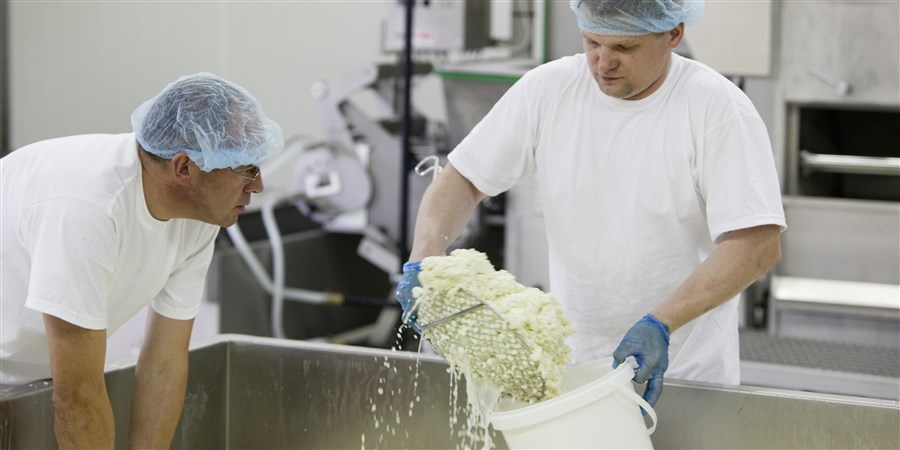Manufacturing output up by 0.5 percent in January

| maand | change (year-on-year % change) | |
|---|---|---|
| 2021 | February | -3.7 |
| 2021 | March | 2.7 |
| 2021 | April | 11.3 |
| 2021 | May | 12.6 |
| 2021 | June | 13.4 |
| 2021 | July | 9.2 |
| 2021 | August | 5.6 |
| 2021 | September | 7.5 |
| 2021 | October | 7.9 |
| 2021 | November | 9.5 |
| 2021 | December | 12.7 |
| 2022 | January | 7.3 |
| 2022 | February | 10.6 |
| 2022 | March | 9 |
| 2022 | April | 12.3 |
| 2022 | May | 10.4 |
| 2022 | June | 9 |
| 2022 | July | 8.1 |
| 2022 | August | 8.3 |
| 2022 | September | 7.9 |
| 2022 | October | 5.4 |
| 2022 | November | 3.5 |
| 2022 | December | 4 |
| 2023 | January | 2.6 |
| 2023 | February | 3.1 |
| 2023 | March | 4.3 |
| 2023 | April | -1.2 |
| 2023 | May | -0.9 |
| 2023 | June | 1.3 |
| 2023 | July | -0.4 |
| 2023 | August | -1.5 |
| 2023 | September | -3.8 |
| 2023 | October | -4 |
| 2023 | November | -3.7 |
| 2023 | December | -0.5 |
| 2024 | January | -4.2 |
| 2024 | February | -1.9 |
| 2024 | March | -5.1 |
| 2024 | April | -3.5 |
| 2024 | May | -3.2 |
| 2024 | June | -5 |
| 2024 | July | -4.1 |
| 2024 | August | -0.3 |
| 2024 | September | -2.8 |
| 2024 | October | -1.5 |
| 2024 | November | 0 |
| 2024 | December | -4.3 |
| 2025 | January | 0.5 |
Growth in over half of industrial sectors
More than half of the various industrial sectors produced more than they did one year previously. Of the eight largest sectors, output fell the most sharply in the transport equipment sector, while it rose the most in the repair and installation of machinery.
| Category | change (year-on-year % change) |
|---|---|
| Repair and installation of machinery | 16.2 |
| Food products | 3.7 |
| Electrical and electronics | 3.2 |
| Rubber and plastic products | 1.3 |
| Metal products | 1 |
| Machinery | -1.6 |
| Chemical | -5.6 |
| Transport equipment | -22.3 |
| Manufacturing (total) | 0.5 |
| Altogether, the industries referred to in the above graph account for almost 80 percent of the total manufacturing output | |
Adjusted output increased in January
A more accurate picture of changes in short-term output is obtained when the figures are adjusted for seasonal effects and the working-day pattern. After adjustment, manufacturing output rose by 1.0 percent in January 2025 relative to December 2024.
After adjustments for seasonal and working-day effects, manufacturing output often fluctuates significantly. In the spring of 2020, output declined rapidly, reaching a low point in May 2020. This was followed by an upward trend until May 2022. The trend has reversed since then.
| year | month | index (2021=100) |
|---|---|---|
| 2021 | February | 94.4 |
| 2021 | March | 96.6 |
| 2021 | April | 97.5 |
| 2021 | May | 98.2 |
| 2021 | June | 100 |
| 2021 | July | 100.3 |
| 2021 | August | 99.7 |
| 2021 | September | 100.9 |
| 2021 | October | 102.5 |
| 2021 | November | 104 |
| 2021 | December | 104.9 |
| 2022 | January | 104.9 |
| 2022 | February | 104.4 |
| 2022 | March | 105.1 |
| 2022 | April | 109.6 |
| 2022 | May | 108.4 |
| 2022 | June | 108.8 |
| 2022 | July | 108 |
| 2022 | August | 107.8 |
| 2022 | September | 108.9 |
| 2022 | October | 108.2 |
| 2022 | November | 107.8 |
| 2022 | December | 108.5 |
| 2023 | January | 108.1 |
| 2023 | February | 107.5 |
| 2023 | March | 109.7 |
| 2023 | April | 108.2 |
| 2023 | May | 107.4 |
| 2023 | June | 109.8 |
| 2023 | July | 107.4 |
| 2023 | August | 106.2 |
| 2023 | September | 104.9 |
| 2023 | October | 103.9 |
| 2023 | November | 104.2 |
| 2023 | December | 107.7 |
| 2024 | January | 103.9 |
| 2024 | February | 105.4 |
| 2024 | March | 103.8 |
| 2024 | April | 104.2 |
| 2024 | May | 103.7 |
| 2024 | June | 104 |
| 2024 | July | 103.3 |
| 2024 | August | 105.3 |
| 2024 | September | 102.7 |
| 2024 | October | 103 |
| 2024 | November | 104.1 |
| 2024 | December | 103.2 |
| 2025 | January | 104.3 |
Manufacturers less negative in February
Dutch manufacturers were less negative in February than they were in January. They were less negative about stocks of finished products, in particular.
Germany is an important market for the Dutch manufacturing sector. In February, German business owners also were less negative than they were in January, as reported by Eurostat
Sources
Related items
- Dossier - Business cycle